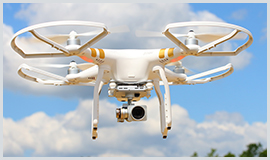



What Is TSCM?
As technology advances in the fields of multimedia devices and remote gadgetry, there is an increasing danger of compromise or loss of critical data, even in extremely secure environments. Security breaches occur stealthily, completely undetected by the organization's security personnel. To combat these breaches, TSCM has become a requirement in today's world. So, what is TSCM exactly? TSCM stands for Technical Surveillance Counter-Measures, abbreviated by the US federal government. It is a term for the technical security countermeasures and surveillance countermeasures undertaken by entities that have received training in technical surveillance countermeasures to detect disengage and remove electronic spying equipment such as bugs, eavesdropping gadgets, software security weaknesses etc. The main purpose of TSCM is to eliminate and safeguard against security hazards.
What is TSCM?
It is difficult to furnish a precise answer to the question, �what is TSCM?� This is because it is a very wide and ever-evolving field. However, in a general way, TSCM can be defined as the services provided by trained surveillance experts to uncover technical glitches, faults, weak areas and other flaws in an organization's security network that could potentially lead to a damaging data breach. It is a set of visual and physical ECM (electronic countermeasures) as well as electronic measures like COMSEC and ITSEC, aimed at conducting a thorough bug sweep of a particular area. A TSCM survey covers procedures such as bug-sweeping and other physical, visual and electronic measures to reinforce the security system of a house or a workplace. Without these surveillance countermeasures, there are high chances of a technical penetration of the facility, which could lead to leakage of sensitive information or a threat to the safety of private individuals. After understanding what TSCM is, one also needs to then learn how it works and what to do to ensure an efficient counter surveillance?
How does TSCM work?
Devices That Emit Radio Waves
Most of the commonly available spying devices, including a majority of bugs, use radio waves to transmit data. The standard procedure for such devices is to employ electronic measures using an advanced RF (radio frequency) receiver. Using lab receivers can very costly and, moreover, a sound knowhow of the workings of RF is required to handle the devices efficiently. It is harder to detect countermeasures such as spread spectrum and burst transmission.
For TSCM surveys, timing is key. For permanent establishments, sweeps and scans must be conducted during working hours so as to uncover remotely controlled devices that can be deactivated during off times to avoid detection.
Spying Devices and Bugs That Do Not Transmit Radio Waves
Spying devices that do not transmit radio waves can be far harder to detect. However, if the person conducting the sweep knows exactly what is TSCM, and what it entails, such sophisticated bugs can be detected. One solution is to scan for a magnetic field or for electric sounds emitted by recording devices, using highly sensitive counter surveillance equipment. However, if there are multiple computers and other installed electrical equipment in the area, the detection of these covert spying devices can become very problematic. In such a scenario, it is easier to employ the physical methods, like the use of cameras, thermal cameras, metal detectors, etc.
Types of technology employed
Here are the most common types of technology used in a bug sweep:
- Mustimeters, to measure device components and power supplies
- Frequency scanners, to check the electromagnetic spectrum that allows for scanning of any unusual signals
- Time-domain reflectometer (TDR), to test the stability of communication cables including telephone lines
- Oscilloscope that provides visuals of signals
- X-ray machine to check the interior of walls and objects
- Nonlinear junction detector (NLJD) to detect equipment linked with covert listening devices
- IT security tools and equipment to investigate cyber security threats
- Infrared thermography, to detect heat emitted from active surveillance components.
- Tools to manually disassemble walls and objects to scrutinize their content(s).
- Flashlight, a key tool for a thorough sweep of darker areas where bugs may be concealed.
- Vector signal analyzer and spectrum analyzer, to conduct advanced analyses of threatening and benign RF signals.




